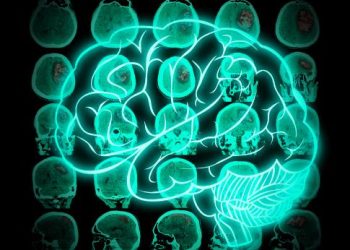A stroke can cause serious long-term disability and even death. If you or someone you know experiences warning symptoms, call 999 immediately. The earlier treatment begins, the better the outcome.
Learn the FAST (Face, Arms, Speech, Time) test to quickly identify a stroke. Ask the person to smile, then look for one side of their mouth to droop or sag.
Face Drooping
Typically, one side of the face will droop when someone is having a stroke. The eyelid or cheek may also droop or sag. A sudden onset of this symptom is a telltale sign of a stroke, particularly if it is paired with other symptoms such as arm weakness or difficulty speaking.
If you think a friend or family member is having a stroke, try to get them to smile at you. If the person’s lopsided smile doesn’t go away, this is another clear sign that they are having a stroke and need to be seen by medical professionals right away. Alternatively, ask them to lift their arms and see if one drifts downward. If it does, call 911 immediately.
However, there are a few medical conditions that can produce similar symptoms to those of a stroke. Bell’s palsy, a nervous system condition, can cause facial paralysis that resembles a stroke. Migraines can also cause numbness or slurred speech, and some neurological disorders such as multiple sclerosis can lead to weakness, vision changes, and balance disturbances. Other medical conditions, such as aortic dissection (an abnormal bulging in the aorta), can also mimic a stroke by causing sudden loss of consciousness.
The onset of symptoms for both Bell’s palsy and a stroke occur suddenly, so these two conditions are often confused for each other. To determine if you’re having a stroke, speak with a doctor as soon as possible to schedule an MRI or CT scan for more definitive testing.
It is important to know that a stroke can lead to permanent damage and should never be ignored. The sooner you receive treatment, the better your chances of a full recovery. Learn more about the F.A.S.T. (face drooping, arm weakness, speech difficulty and time to call 911) tips and help spread awareness about stroke by sharing them with your friends and family members. It could save lives!
Arm Weakness
When someone has a stroke, part of their brain isn’t getting the blood supply it needs. This can cause a wide range of symptoms that depend on the area of the brain affected. For example, if the left side of their brain isn’t getting enough oxygen, their arm might be weak. They might also have trouble with balance, dizziness and memory.
Weakness in the arms is one of the main warning signs of a stroke and it usually happens quickly. A person may suddenly find themselves unable to raise their arms or they might be unable to keep them in position, with the arm drifting downward. This is a clear sign that they need emergency treatment.
If a person suffers a stroke, it’s important that they get to hospital as soon as possible. If they don’t, the brain damage from the stroke can worsen and they may be unable to recover fully.
The symptoms of a stroke can vary depending on the type of stroke, which part of the brain is affected and how long they’ve been having problems with it. They can sometimes develop slowly over hours or days, especially after a transient ischemic attack (TIA) that leads to a stroke.
Strokes are caused by a blockage or rupture of a blood vessel in the brain. This can cut off the brain’s supply of blood and oxygen, causing severe symptoms that don’t go away on their own.
People who have a stroke often have a combination of symptoms, including numbness in several parts of their body. They might have problems with balance, coordination and speech. They might also have a headache and feel confused or emotional. Stroke symptoms tend to happen on one side of the body, and are more common in men than women.
A stroke can also cause numbness in the legs or feet, although this is less common. It can also affect the chest and diaphragm, causing pain when breathing. It can also cause a feeling that something is stuck in the shoulder (paresthesia) or a sensation of prickling or burning in the arm.
Speech Difficulty
When a person suffers a stroke, it can affect their speech in different ways. Some people will only have trouble with a few sounds or words, while others may struggle to make themselves understood at all. This is because a stroke can affect the brain, which controls the muscles that help you talk. The type of speech disorder that a person experiences depends on where the stroke occurs and how severe the damage is.
The most common speech impairments associated with stroke include slurring, poor pronunciation, and changes in the rhythm or speed of speech. These symptoms are caused by nerve or brain problems, and they can happen in people of any age. They can also be a symptom of a condition called dysarthria, which can be caused by muscle weakness or by changes in the brain.
Speech disorders can also cause a person to make frequent grammatical errors, which may confuse others and lead them to believe the person is behaving badly when they are not. Some people will struggle to follow directions, and this can be misinterpreted as stubbornness when it is actually a result of not understanding what the instructions are.
Other symptoms of a stroke are less obvious. People who have a stroke often experience nausea or vomiting, and some will show signs of confusion or seizures. They might have difficulty walking or moving their arms, and they may have trouble using the toilet. These symptoms are caused by damage to the arachnoid membrane, which surrounds the brain and is filled with blood vessels.
A person who is having a stroke needs to be evaluated and treated quickly, so they can minimize the effects of the damage. If they can be diagnosed in time and given appropriate treatment, they may have a good chance of recovering their full range of abilities. A person who does not receive immediate medical care will likely develop permanent disabilities that can be devastating, such as paralysis or a loss of memory. Strokes with no noticeable symptoms are sometimes called silent strokes, and they occur when the area of brain damage is small and occurs in an area that does not control vital functions like movement or speech.
A stroke is a medical emergency, and the faster it’s recognized and treated, the better the results. In some cases, the effects of a stroke can be limited or even reversed by getting treatment within hours of the first symptoms. If you suspect someone is having a stroke, use the FAST test. It can help you remember the warning signs of a stroke, so you know when it’s time to call 911.
If you have symptoms that go away in a few minutes, it may be a transient ischemic attack (TIA). A TIA is like a mini-stroke, and it’s a warning sign that a full stroke might happen soon. TIAs should still be taken seriously, as they can be a sign of other serious health problems, such as a heart attack or a pulmonary embolism (blood clot in the lung).
Different parts of the brain control different abilities, so stroke symptoms depend on which part of the brain is affected. Common ones include a sudden loss of balance or coordination (ataxia), muscle weakness on one side of the body or difficulty speaking and understanding what others are saying (aphasia). Other symptoms may be trouble walking, problems with memory and thinking, and extreme headache.
The cause of a stroke depends on the type, but most often it occurs when a blood clot blocks the flow of oxygen and nutrients to part of the brain or when a blood vessel bursts. Clots usually form from plaque in the arteries that supply the brain or artery walls, and they can break off and travel through the bloodstream to block the flow of blood to the brain. Blood clots can also form inside the brain, which is called hemorrhagic stroke.
Each year, about 795,000 people in the United States have a stroke. Many of these are avoidable. The best thing you can do is learn the warning signs of a stroke and share them with friends and family. Wear a medical bracelet that lists your medical conditions and allergies, and make sure your doctor knows about your risk for stroke.









